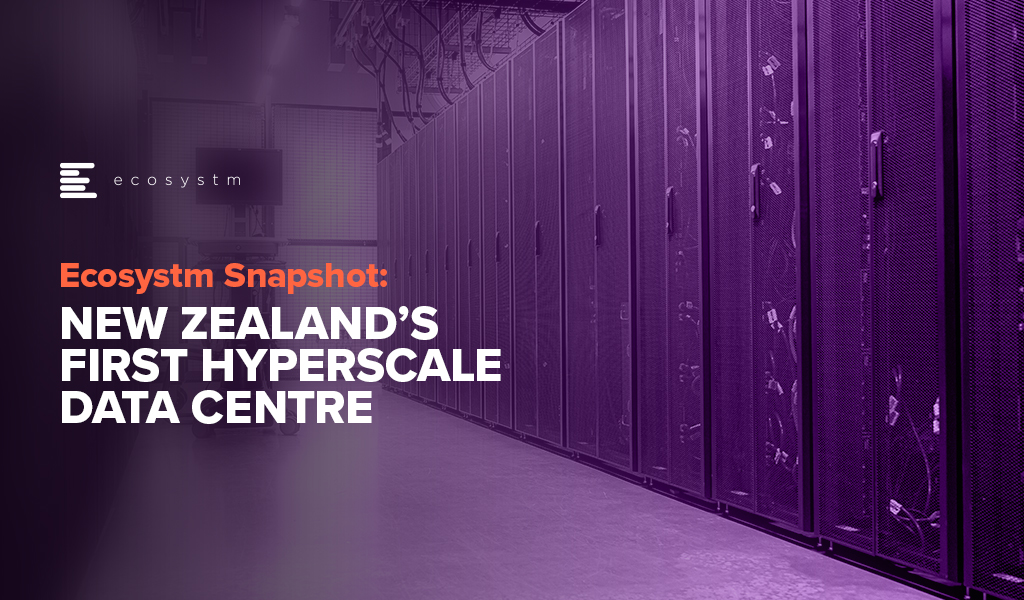New Zealand’s cloud landscape is looking to change drastically with the arrival of its first hyperscale data centre platform in Invercargill, a city in the southern tip of New Zealand’s South Island. The focus on digitalisation (in both the private and public sectors), growing data localisation mandates, the need for big data storage, and the demand for scalable apps and innovations are driving the demand for hyperscale data centres and more undersea cables in the region.
In December 2020, Meridian Energy, New Zealand’s fourth-largest electricity retailer, and Datagrid New Zealand, run by Hawaiki Cable announced the launch of the project to develop a 60MW, 25,000 sqm facility near the town of Makarewa at a cost of nearly USD 500 million. The project is due for a commercial launch in 2023, and a major part of the investment will involve the laying of two new submarine cables. The first subsea cable will connect Invercargill to Sydney and Melbourne in Australia and the second will connect with Hawaiki Cable’s landing point at Mangawhai Heads, north of Auckland which will further extend to Auckland, Wellington, and Christchurch.
The country clearly recognises the need for a robust infrastructure to accelerate innovation – Microsoft has also received approval from the New Zealand government in September last year to open a data centre region. To support the future of cloud services and to fulfil New Zealand progressive data centre demands, CDC Data Centres have also planned to develop two new hyperscale data centres in Auckland, New Zealand.
Ecosystm Comments

“The introduction of the Datagrid New Zealand data centre in Invercargill will be a welcome asset to the Southland region of New Zealand. With primary industries being farming, fishing and forestry, the region has done well throughout the COVID-19 pandemic. This initiative will further benefit the local economy by delivering opportunities for economic prosperity for local businesses.
With long-term growth at the data centre expected to consume up to 100MW of renewable energy, Meridian Energy is well equipped to provide renewable energy generated at the Manapouri hydroelectric power station, capable of generating 850MW. The potential closure of the 550MW Tiwai Point Aluminium Smelter is expected to put the country in a position of oversupply.
The data centre will be a critical piece of New Zealand’s infrastructure, supporting the roll-out of 5G networks by telecom providers and the need for low-latency cloud compute and data storage. Datagrid will provide a competitive alternative to the likes of Microsoft’s new data centre.
While the construction and opening of the data centre will possibly add more stress to New Zealand’s under-resourced construction sector, it will also create tech jobs in the Southland region, in the long term. Unique to the region is the Southern Institute of Technology that has a Zero Fees Scheme that has been confirmed until the end of 2022. The data centre will help to keep skilled tech workers in the region.“
Identifying emerging cloud computing trends can help you drive digital business decision making, vendor and technology platform selection and investment strategies.Gain access to more insights from the Ecosystm Cloud Study.

IBM announced its intention to spin off its infrastructure services business as a separate public company, allowing Big Blue to focus on hybrid cloud and AI. The newly formed entity, temporarily named NewCo, will offer project and outsourcing services that currently fall under its GTS business unit. NewCo will have a staff of around 90,000 employees and is expected to earn revenue of about $19B. While GTS has experienced declining revenue for some time now, IBM believes that the split will unlock growth and put it on a path to recovery.
Once the Red Hat acquisition closed last year and the tag team of Jim Whitehurst and Arvind Krishna were announced, it became clear that IBM was gearing up to become a leaner, more agile leader in the hybrid cloud space. One of two possible courses seemed apparent – either wither away for years until IBM was small enough to become nimble, or take bold action. IBM has opted for the latter and is likely to be rewarded for it. The new IBM will have revenue of around $59B, well short of its peak at over $100B, but sacrificing turnover for margin and growth gives it a more positive long-term outlook.
Stripping back IBM to become smaller, faster growing, and more profitable, will help solve many of its greatest challenges. Significant investment into growth segments will become more palatable without the financial burden of the declining infrastructure services unit. The well-needed cultural change and drive to think like a start-up will become more practical in the new IBM.
NewCo to Build New Cloud Partnerships
IBM’s infrastructure services unit has had some great success in larger, complex, hybrid cloud deals recently – but at the lower end of the market there have been many head winds. Public cloud providers have eroded what was once a lucrative compute and storage services market. At the same time, application service providers, like Accenture, TCS, and HCL have been pivoting towards infrastructure. Untethering infrastructure services makes a turnaround story more likely, giving NewCo greater flexibility and speed, which clients have been crying out for.
The greatest benefit to NewCo will be the ability to freely partner with other cloud providers, like AWS, Microsoft, and Google. Although IBM has made noises about being willing to embrace its competitors, this was not necessarily implemented on the ground nor was it reciprocated.
It is no secret that GTS and GBS have had a rocky relationship since day one. The split will reassure clients that each of them is agnostic and relieve any internal pressure to partner unless it is best for the client. While elements of this decision look like the unfolding of a long-term strategy that began under Ginni Rometty, it does, however, leave open the question of why GTS and GBS were more closely integrated over the last few years. This also means IBM is moving in the opposite direction to its competitors, who are shifting towards offerings that cover the full stack of services from infrastructure up to applications.
What Lies Ahead for IBM
One detail that is not immediately certain is the fate of IBM security services, which could be integrated with security software at IBM, spun out with the rest of infrastructure services, or even split into consulting and delivery. An important differentiator for IBM has been its ability to build in security at the beginning of transformation projects making final placement a difficult decision.
It might be tempting to predict that next IBM would couple its Systems unit and Support Services to be spun off or sold although Mr. Krishna ruled that out. Over the long term, these are both financially underperforming units but there is an advantage to building the core infrastructure that critical workloads are run on.
Each new IBM CEO has had a make or break moment and Mr. Krishna has decided that his will come early. For the company to thrive for another 100 years it needed to place a big bet and it could not have come soon enough.




